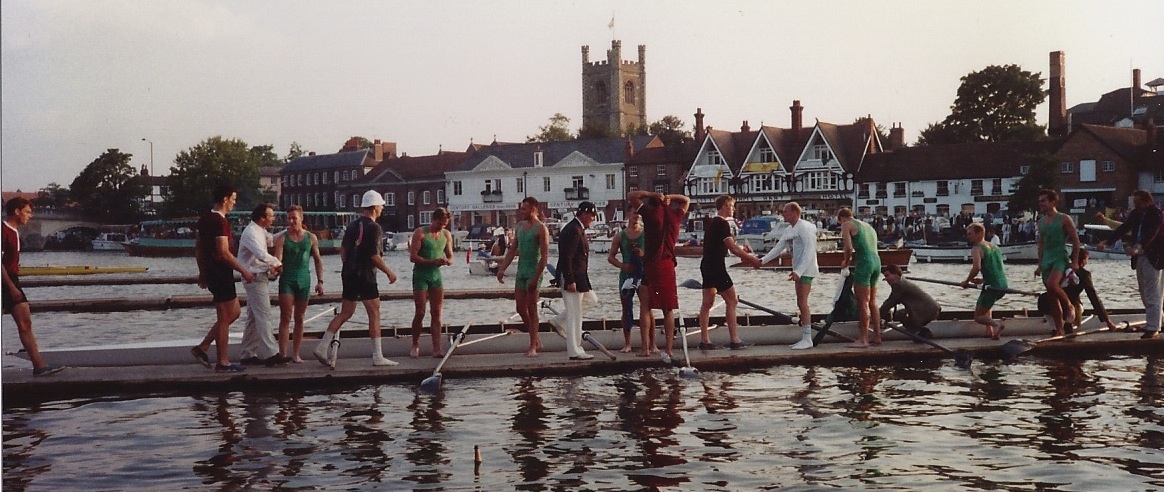The London 2012 Olympic Torch Relay will travel the length and breadth of the British Isles between May 18 and the Opening Ceremony of the Games on 27 July. The Torch Relay for the ‘Austerity Games’ of 1948 was in many ways a much simpler, some might say purer, affair.
In 1948, the Olympic Flame was lit at Olympia at midday on Saturday 17 July. The Greek leg of the relay, shortened at the last minute due to political unrest, carried the Flame to a Greek destroyer which sailed for Corfu where it was received on board HMS Whitesands Bay at 1.30 pm on Sunday 18th. The Royal Navy frigate sailed for Bari in Italy, arriving at 12.30 pm on 19 July. On landing, the Olympic Flame was carried in Relay day and night – stopping only briefly for civic receptions – through Italy, Switzerland, south-east France, Luxembourg, Belgium before re-entering France to embark on HMS Bicester at Calais at 6.15pm on 28 July. Between Bari and Calais, 1051 Torch Bearers covered 2375 km in under 9 days and 6 hours.
HMS Bicester landed in Dover at 8.25 pm on Wednesday 28 July. 73 runners acted by Torch Bearers along the 255 km route between Dover and Wembley Stadium which passed through Canterbury, Charing, Maidstone, Westerham, Redhill, Reigate, Dorking, Guildford, Bagshot, Ascot, Windsor, Slough and Uxbridge. Mark John was the last Torch Bearer, carrying the Olympic Flame into the Opening Ceremony in the Empire Stadium, Wembley at 4pm on Thursday July 29.
Photos of the Relay passing through the Surrey have been collected into a Flickr group by the County Council.
The Official Report of the 1948 Olympics records how even in the dead of night, large crowds would gather all along the route, especially at points where the Olympic flame was passed form one runner to the next.
“At Charing, in Kent, at 1.30 am, 3,000 people mobbed the torch bearer; at Guildford every available policeman was needed to control the early morning crowds, while Western Avenue, the great double highway from Uxbridge towards London, was lined on both sides for the first time in its history.”
A second Relay was staged to carry an Olympic Flame from Wembley to Torquay, venue for the Olympic sailing competition. The first torch was lit by Lord Burghley, Chairman of the Organising Committee at 9.00 am on Sunday 1 August. The 330 km route to Torquay passed through Uxbridge, Slough, Maidenhead, Reading, Basingstoke, Andover, Salisbury, Sherborne, Yeovil, Exeter and Newton Abbot. After passing through the hands of 107 Torch Bearers, the Torquay Olympic Flame was lit at Torre Abbey, at 11.00 am on Monday 2 August.
High Duty Alloys, a manufacturer of aircraft components, supplied a total of 1720 Olympic Torches from its factory on the Slough Trading Estate. The Torches were cast in the company’s ‘Hiduminium’ high-strength, high-temperature aluminium alloys.
Modern Torch Relays are deliberately more inclusive, and physically less demanding. The inevitable corollary is that logistically, they are even more complex. The most recent major relay in Britain was the Queen’s Jubilee Baton Relay which heralded the XVII Commonwealth Games in Manchester in 2002. That Relay was based on the operational model used for the 2000 Sydney Olympic Torch Relay.
The 2012 Torch Relays – one for the Olympics and a second shorter one prior to the Paralympics – will require thousands of Torch Bearers. Few will run for more than a few hundred metres. Fewer are likely to run in the middle of the night!
Update: On 15 September 2011, LOCOG announced that the 2012 London Paralympic Torch Relay will run through the night. Typically staged after the Closing Ceremony of the Olympic Games, the Paralympic Torch Relay is on a smaller scale compared with its Olympic equivalent. LOCOG will break new ground in 2012 with flames being lit in the capital of each of the home nations. These will be relayed to Stoke Mandeville near Aylesbury in Buckinghamshire which is generally acknowledged as the birthplace of the Paralympic Movement. Here the four flames will be combined into one which will be carried in a 24-hour relay to the Olympic Stadium for the Paralympic Opening Ceremony on 29 August.



